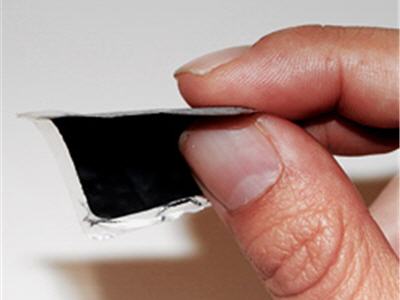Zinc key ingredient to make the ultimate portable battery

Battery start-up company Imprint Energy has designed an ultrathin, rechargeable battery made mostly of zinc and which can be screen-printed. The innovation could enable a completely new generation of devices, known so far as wearable electronics.
Radio receivers that wrap around your finger and worn like a ring or a cellphone as flat as a credit card are only some of the possible products we could see in the short-term, thanks to these extra-slim batteries.
The company hopes its devices will compete with lithium-polymer batteries on performance, at significantly lower costs and without safety concerns associated with lithium-polymer devices.
Imprint’s batteries are based on solid, robust films, with ionic conductivities close to high-performance liquid electrolytes in capability, and orders of magnitude higher than conventional solid electrolytes such as ceramics.
CEO Devin MacKenzie told Gigaom.com that zinc is the key element in the making of these revolutionary batteries:
While zinc has been used for years in batteries, it’s been difficult to make zinc batteries rechargeable. That’s because when zinc is combined with a liquid electrolyte it creates something called dendrites, which are tiny fibres that grow and get in the way of the charging reaction. Imprint Energy solved this hurdle by using an electrolyte made of a solid polymer combined with the zinc.
Imprint, which now has a staff of eight, was founded in 2010 by U.C. Berkeley PhD students Christine Ho and Brooks Kincaid, and more recently they raised seed funding from Dow Chemical and CIA fund In-Q-Tel.
Initial applications include sensors, intelligent films and toys, plus other micro-power devices.
According to the company’s website, first commercial products could be available within two years.
Imprint is a partner in a commercial collaborative effort, led by Thin Film Electronics in Scandinavia, to develop an all-printed sensor tag for temperature monitoring in logistics, according to a press released circulated in December last year.
The demonstrator may incorporate a solar panel as well as the battery to generate its own power.
In the longer-term, Imprint is also looking at commercial potential in small portable electronics such as wearable health monitoring systems and Bluetooth headsets.
The seed-level-funded company is in the process of establishing partnerships, and has attracted interest from the US, Japan, and Europe. Kincaid also considers China to be an interesting market.
Though early days, Imprint is exploring business models that include contracting out the battery production – which can be done using existing printing equipment, such as screen – and generating revenues on the supply of its battery inks.
More News
{{ commodity.name }}
{{ post.title }}
{{ post.date }}



Comments